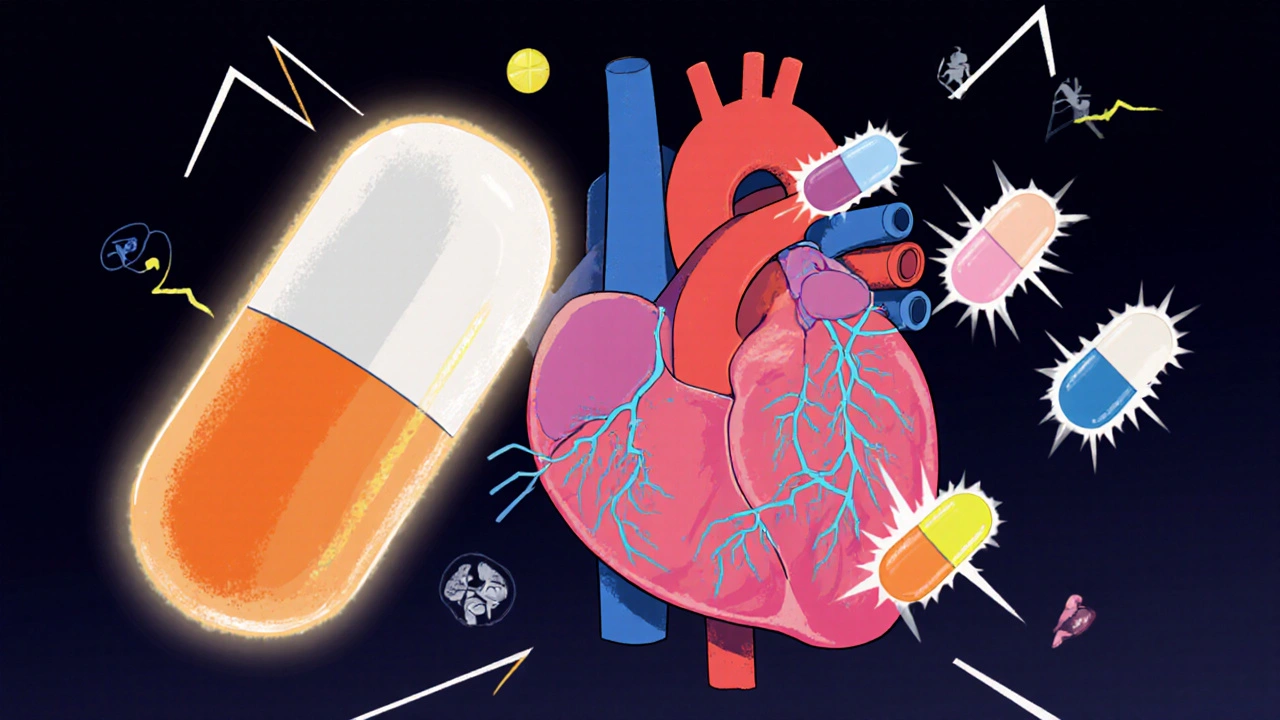Amiodarone: What It Is, How It Works, and What You Need to Know
When your heart skips, races, or beats irregularly, Amiodarone, a potent antiarrhythmic medication used to treat life-threatening heart rhythm problems. Also known as Cordarone, it’s one of the few drugs doctors turn to when other treatments fail. Unlike many heart meds, Amiodarone doesn’t just slow down the heart—it rewires how electrical signals move through heart tissue. That’s why it works when others don’t. But this power comes with serious trade-offs.
Amiodarone is often prescribed for ventricular tachycardia, a dangerous rapid heartbeat that starts in the heart’s lower chambers, or atrial fibrillation, a common irregular rhythm that raises stroke risk. It’s not a first-line drug. Most doctors try beta-blockers, calcium channel blockers, or other antiarrhythmics first. But when those fail—or when a patient has structural heart disease—Amiodarone becomes the go-to. Its long half-life means it stays in the body for weeks, even after you stop taking it. That’s why side effects can show up months later.
One of the biggest concerns with Amiodarone is QT prolongation, a change in the heart’s electrical cycle that can trigger a deadly rhythm called torsades de pointes. That’s why doctors check your ECG before and during treatment. But it’s not just your heart. Amiodarone can affect your lungs, liver, thyroid, and even your skin. Some people develop a bluish-gray tint on their face or neck after months of use. Others get thyroid levels that swing wildly—too high or too low. Lung inflammation, though rare, can be serious and is often mistaken for pneumonia.
There’s no easy fix for these side effects. Stopping Amiodarone doesn’t make them vanish overnight. That’s why patients on this drug need regular blood tests, chest X-rays, and thyroid checks. It’s not just about managing the arrhythmia—it’s about watching for hidden damage. Many people stay on Amiodarone for years because the risk of another dangerous heart rhythm is worse than the drug’s side effects. But that decision isn’t made lightly.
What you’ll find in the posts below isn’t just a list of facts. It’s a collection of real-world insights: how Amiodarone compares to other antiarrhythmics like sotalol or dofetilide, how doctors monitor for toxicity, what patients wish they’d known before starting, and why some choose to switch or stop despite the risks. You’ll see how this drug fits into broader discussions about heart health, medication safety, and long-term management. Whether you’re on Amiodarone, considering it, or just trying to understand why your doctor chose it, this guide gives you the context you need to ask better questions—and make smarter choices.
Cordarone (Amiodarone) vs. Alternatives: What Works Best for Arrhythmias?
Cordarone (amiodarone) is effective for serious heart rhythm disorders but carries serious long-term risks. Learn how alternatives like sotalol, dronedarone, and ablation compare in safety and effectiveness.
